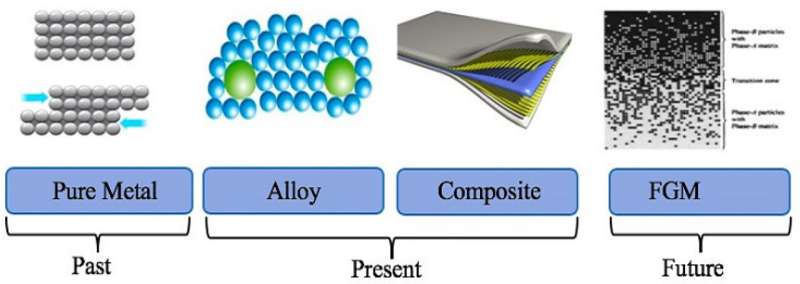Functionally graded material resistant to blasts and fire in buildings

When a bomb goes off or fire breaks out, a building constructed or retrofitted with an engineered composite currently confined to special applications could buy the surviving occupants extra time to get out, according to new research at The University of Alabama in Huntsville (UAH).
Functionally graded material (FGM), a recently developed composite characterized by the gradual variation of material properties across its thickness, is an effective bomb-resistant material in structural uses, according to new research led by Dr. Elias Ali, a lecturer in the Department of Civil Engineering at UAH, a part of the University of Alabama System.
The composite increases collapse load by 12 percent for cold formed steel beams and 18 percent for columns in the new research. Earlier research led by Dr. Ali found that FGM used as sheathing material for buildings could slow the spread of fire from reaching the main structural parts of a building by up to 14 percent when compared to gypsum board.
FGM has been dubbed “the holy grail” of composite materials. Currently its high manufacturing cost and the challenges of mass production and forming it into complex shapes limits its use to advanced technologies such as those in the aerospace industry, naval ship construction and on-demand fabricated uses.
“The challenge the material science and structural engineering research community faces in terms of FGM composite is the lack of availability,” Dr. Ali says. “So far, there are only a few companies devoted to manufacturing it, and they are confined mainly to the aerospace and defense industries.”
FGM has a unique and different material property from its individual constituent materials, yet preserves their benefits.
“Because of the improved mechanical properties, FGM can be useful in extreme loading environments with high thermal, chemical or mechanical stresses that would cause a single-material part to fail,” says Dr. Ali.
Dr. Ali and his collaborator, Dr. Fadi Althoey, the Department of Civil Engineering program head and an assistant professor at Najran University in Saudi Arabia, used computer modeling and simulation to study a metal/ceramic composite material for blast-resistance and fire protection. They performed extensive material gradation sensitivity parametric studies on the performance of the composite material in extreme loading environments.
The same qualities that his study shows make FGM attractive for bomb-hardened buildings also could prove beneficial in earthquake and severe weather zones, Dr. Ali says, though his study did not include those types of tests.
“From our numerical investigation, this composite material can result in a resilient structural system in fire and blast cases,” Dr. Ali says. “Their performance in earthquakes and hurricanes needs to be further investigated. However, we can predict from our study that they can be useful in such extreme events.”
While the numerical simulation results provide a new material solution for structures in extreme loading environments, Dr. Ali says that to make the research complete an experimental investigation is needed.
The application of material with a graded interface in structural engineering is still in the early research stage, Dr. Ali says. FGMs can be manufactured using several techniques.
“As an emerging technology, additive manufacturing (AM) is capable of producing fully functional parts in a wide range of materials including metallic, ceramic, polymers, and their combination in the form of composite, hybrid or functionally graded materials,” he says. “AM also offers a high degree of control over spatial variation of materials.”
He expects that more research into the materials will eventually make FGM widely available for applications on structures and critical infrastructures.
“Since FGM is a multi-functional material, I would anticipate the use of the material in many applications including new buildings as well as in retrofit works,” Dr. Ali says. “I would envision that it will be the future of engineered materials.”
A bicycle riser bar made from jute fibre reinforced polymer composite materials
Elias Ali et al, Numerical Investigation on Blast Response of Cold-Formed Steel Framing Protected with Functionally Graded Composite Material, Buildings (2022). DOI: 10.3390/buildings12020118
Citation:
Functionally graded material resistant to blasts and fire in buildings (2022, February 1)
retrieved 1 February 2022
from https://techxplore.com/news/2022-02-functionally-graded-material-resistant-blasts.html
This document is subject to copyright. Apart from any fair dealing for the purpose of private study or research, no
part may be reproduced without the written permission. The content is provided for information purposes only.
For all the latest Technology News Click Here
For the latest news and updates, follow us on Google News.

